You can lead your client’s to water, but can you make them drink? Graypuksand’s Heidi Smith details how designers are now not only designing spaces, but lasting, sustainable organisational change.
Heidi Smith believes the biggest mistake a designer can make is assuming they know the solution before they design the workplace. The Melbourne-based Partner at Gray Puksand has spent the past 12 years specialising in workspace strategy and knows a thing or two about designing environments that enhance employees’ experience. For Smith, adopting a ‘people matter’ design approach is necessary in delivering actual workplace change. “Designers who only react to the latest hottest strategy without taking the time to get to know their clients may ultimately only be designing pretty spaces,” she explains. “But unless those spaces provide for the client’s needs, they can’t be considered successful.”
Adopting people-focused design strategies is integral to realising a responsive workplace. And insight into the client’s needs is only gained through an understanding of a company’s culture and through exploration of the project’s opportunities and constraints. To this end, Smith regularly utilises intensive workshops and focus groups, uncovering her client’s corporate personality to formulate a design expression based on this personalised foundation.
Gray Puksand’s recent Australia Post office fit-out in Melbourne’s Lonsdale Street is the result of such people-focused client engagement. As Smith says, “We spent over four months getting to know the teams that would be occupying the space, understanding their challenges and aspirations and testing various outcomes before we even put pen to paper for the test fits.” The final scheme reflects the staff’s commitment to wellbeing, which is expressed through a domestic scale fit-out incorporating informal meeting areas and intimate booth seating.
This focus on wellbeing in the workplace is not uncommon and Smith has noticed business leaders placing greater emphasis on their staff’s happiness in recent years. The shift has given rise to an agile workplace, resulting in flexible work environments that not only feature more end-of-trip facilities, but also accommodate spaces for in-house yoga, healthy food offerings and gyms. In this current knowledge economy investing in employees is integral to a company performing well because any organisation is only ever as good as its people.
But while well considered people-focused design can enhance and influence employees’ experiences within a workplace, it can’t do so on its own. “Delivering actual change is an immeasurable prospect and design is only one part of the overall puzzle that is cultural change,” explains Smith. “Actual change relies on people and their individual attitudes. It also relies on the collective understanding that an organisation has on agreed behaviours and aspirations.”
A design engagement program must run in conjunction with a cohesive change management strategy, and together this will yield the best opportunity for delivering actual workspace cultural change. So informal meeting areas and booth seating may be popular features in contemporary workplace design, but they won’t be effective tools for change unless all employees are properly educated in how to use them as, for example, part of the company’s overall operations strategy. Smith also understands that achieving the desired type of workplace interaction can only happen if employees themselves feel invested. Tailoring design decisions so they convey a relatable story serves to reinforce the company’s vision, ultimately supporting and encouraging its cultural aspirations.
INDESIGN is on instagram
Follow @indesignlive
A searchable and comprehensive guide for specifying leading products and their suppliers
Keep up to date with the latest and greatest from our industry BFF's!
The new range features slabs with warm, earthy palettes that lend a sense of organic luxury to every space.
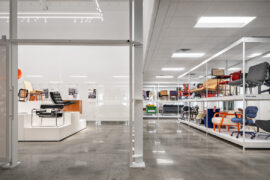
The undeniable thread connecting Herman Miller and Knoll’s design legacies across the decades now finds its profound physical embodiment at MillerKnoll’s new Design Yard Archives.
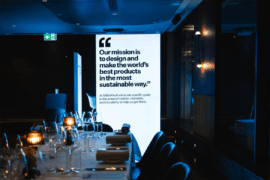
MillerKnoll reimagines the convention of dinner table interactions by plating up a future-forward menu of sustainable design conversation starters as part of the inspiring “Conversations for a Better World” event series.
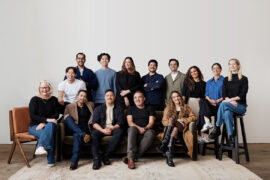
Sydney-based architecture studio Studio Johnston has announced a series of leadership promotions, new team members and a refreshed parental leave policy.
The internet never sleeps! Here's the stuff you might have missed
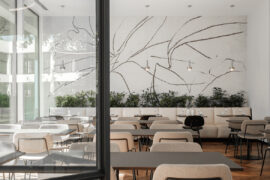
Hospitality is evolving fast, demanding interiors that can flex as quickly as guest expectations. From modular seating to stackable silhouettes, Bowermans brings global design brands and local know-how to help designers shape spaces that perform as well as they inspire.
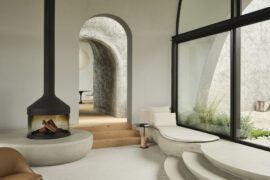
Leeton Pointon Architects and Allison Pye Interiors have been awarded as the winner of The Living Space at the INDE.Awards 2025 for their exceptional project House on a Hill. A refined and resilient multigenerational home, it exemplifies the balance of architecture, interior design and landscape in creating spaces of sanctuary and connection.
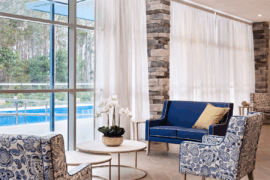
Inspired by an unthinkable design challenge on Sydney Harbour, Materialised’s ingenuity didn’t just fuse acoustic performance with transparent finesse – it forever reimagined commercial curtain textiles by making the impossible possible.